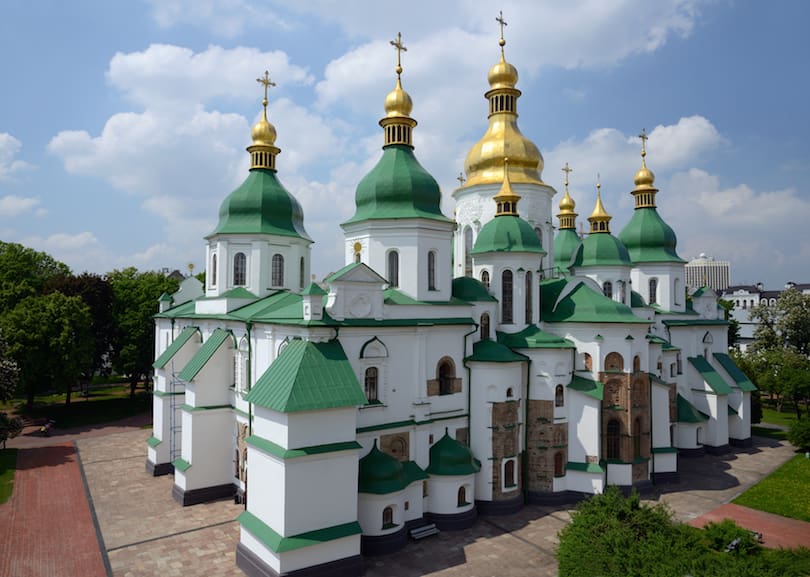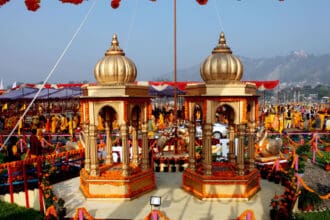Discover the awe-inspiring beauty of the 16 most famous cathedrals in the world. From the Gothic splendor of Notre-Dame to the iconic St. Peter’s Basilica, this article takes you on a journey through centuries of architectural brilliance and spiritual significance.
Introduction
Cathedrals stand as breathtaking symbols of human ingenuity and devotion, spanning centuries and continents. These monumental structures are not just places of worship; they are living testaments to the architectural prowess of their eras. In this article, we embark on a journey to explore the 16 most famous cathedrals in the world, each an extraordinary blend of art, spirituality, and history. Let’s dive into this awe-inspiring exploration of architectural masterpieces that continue to inspire wonder and awe in the hearts of millions.
16 Most Famous Cathedrals in the World
Here, we present an exploration of 16 cathedrals from different corners of the globe, each distinguished by its unique beauty, historical significance, and spiritual resonance.
1. St. Peter’s Basilica – Vatican City
As the most significant Renaissance-era cathedral, St. Peter’s Basilica is a sublime masterpiece of architecture. The brainchild of luminaries like Michelangelo and Bernini, this spiritual epicenter of Catholicism houses precious works of art, including Michelangelo’s “Pieta” and Bernini’s canopy.
2. Notre-Dame Cathedral – Paris, France
The epitome of French Gothic architecture, Notre-Dame Cathedral captivates visitors with its intricate façade, majestic rose windows, and haunting gargoyles. Victor Hugo’s literary masterpiece “The Hunchback of Notre-Dame” further immortalized this iconic cathedral.
3. Hagia Sophia – Istanbul, Turkey
Originally built as a Christian basilica, the Hagia Sophia later transformed into a mosque and now serves as a museum. With its awe-inspiring dome and Byzantine mosaics, this structure stands as a testament to the rich history and cultural amalgamation of Istanbul.
4. Chartres Cathedral – Chartres, France
Chartres Cathedral, an exemplary illustration of French High Gothic architecture, is renowned for its stunning stained glass windows and an intricate labyrinth. Pilgrims and visitors alike are drawn to its spiritual ambiance and architectural grandeur.
5. St. Paul’s Cathedral – London, England
A symbol of London’s resilience, St. Paul’s Cathedral, designed by Sir Christopher Wren, features an awe-inspiring dome that offers panoramic views of the city. Its historical significance is deeply interwoven with British history, including moments like the funerals of Winston Churchill and Princess Diana.
6. Cologne Cathedral – Cologne, Germany
A towering masterpiece of Gothic architecture, Cologne Cathedral is a marvel of intricate stonework and artistic grandeur. Its twin spires dominate the city’s skyline, and the cathedral’s awe-inspiring interior draws millions of visitors annually.
7. Florence Cathedral – Florence, Italy
Dominating Florence’s skyline, the Florence Cathedral, also known as the Duomo, is a prime example of Italian Gothic architecture. Its iconic red-tiled dome designed by Filippo Brunelleschi is a true engineering marvel.
8. Santiago de Compostela Cathedral – Santiago, Spain
A renowned pilgrimage site, Santiago de Compostela Cathedral, holds spiritual significance for countless pilgrims walking the Camino de Santiago. Its ornate Baroque façade and crypt, believed to house the remains of Saint James, attract visitors from all over the world.
9. Westminster Abbey – London, England
Steeped in history and royal ceremonies, Westminster Abbey has witnessed coronations, weddings, and funerals of British monarchs for centuries. Its stunning Gothic architecture and Poets’ Corner, a memorial to literary giants, make it an indispensable part of British heritage.
10. Sagrada Família – Barcelona, Spain
The awe-inspiring Sagrada Família, designed by the visionary architect Antoni Gaudí, is an ongoing work of art in perpetual construction. Gaudí’s distinct architectural style, blending Gothic and Art Nouveau elements, makes it an unparalleled marvel in the world of cathedrals.
11. Milan Cathedral – Milan, Italy
An exceptional representation of Italian Gothic architecture, Milan Cathedral, or Duomo di Milano, stands as a testament to the city’s artistic and cultural heritage. Its elaborate façade and the view from its rooftop attract millions of tourists annually.
12. St. Basil’s Cathedral – Moscow, Russia
A symbol of Russia’s rich history and architectural opulence, St. Basil’s Cathedral captivates with its colorful onion domes and intricate designs. Located in Moscow’s iconic Red Square, this cathedral is a living testament to the nation’s identity.
13. Canterbury Cathedral – Canterbury, England
As the seat of the Archbishop of Canterbury, the Canterbury Cathedral holds tremendous significance in English Christianity. With its Romanesque and Gothic features, it offers a glimpse into the evolution of architectural styles over the centuries.
14. Duomo di Siena – Siena, Italy
The black-and-white marble façade of the Duomo di Siena stands as an architectural marvel in the heart of Tuscany. Its Gothic and Romanesque elements, complemented by stunning frescoes and sculptures, make it a must-visit destination.
15. Washington National Cathedral – Washington, D.C., USA
As a prime example of Neo-Gothic architecture, the Washington National Cathedral is a significant spiritual and cultural landmark in the United States. Its intricate stained glass windows and majestic flying buttresses leave visitors in awe.
16. Salisbury Cathedral – Salisbury, England
Salisbury Cathedral is renowned for possessing the tallest spire in the United Kingdom and the world’s oldest working clock. Its stunning Gothic architecture and 13th-century cathedral close make it a captivating destination.
FAQs
1. What Makes a Cathedral Famous?
A cathedral’s fame often stems from a combination of historical significance, architectural brilliance, religious importance, and cultural impact. The 16 cathedrals mentioned above embody these characteristics, drawing millions of visitors from around the globe.
2. Which Cathedral Has the Most Impressive Stained Glass Windows?
Chartres Cathedral in France is celebrated for its stunning collection of stained glass windows, renowned for their intricate designs and vibrant colors. Visitors are left mesmerized by the play of light through these awe-inspiring artworks.
3. Are Cathedrals Only of Religious Significance?
While cathedrals are primarily places of worship and spiritual significance, many of them also serve as cultural landmarks and repositories of history and art. They hold broader appeal and attract tourists from diverse backgrounds.
4. How Long Did It Take to Build the Sagrada Família?
The construction of the Sagrada Família in Barcelona, Spain, began in 1882 and continues to this day. The ambitious project’s completion date is estimated to be in the first half of the 21st century, making it a work in progress for over a century.
5. What Is the Oldest Cathedral on the List?
Hagia Sophia in Istanbul, Turkey, holds the distinction of being the oldest cathedral among the 16 mentioned in this article. Its construction dates back to 537 AD, making it an awe-inspiring relic of Byzantine architecture.
6. How Did Wars and Conflicts Impact These Cathedrals?
Many of the cathedrals faced challenges during wars and conflicts, enduring damages and destruction. However, their resilience and the dedication of subsequent generations helped restore and preserve these architectural gems.
Conclusion
The 16 most famous cathedrals in the world stand as living emblems of human creativity, devotion, and resilience. From the Gothic splendor of Notre-Dame to the futuristic vision of the Sagrada Família, each cathedral carries within it a unique story that has shaped the course of human history. As we journeyed through these architectural marvels, we hope you have been inspired by the intricate artistry and profound spirituality that these cathedrals represent.







